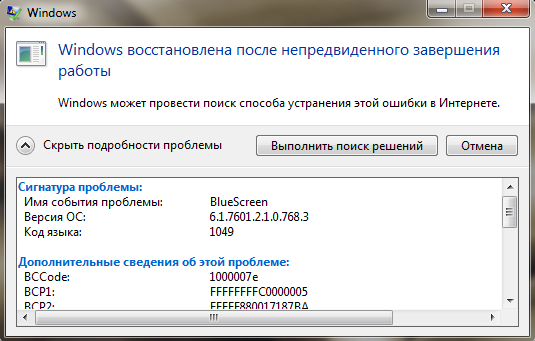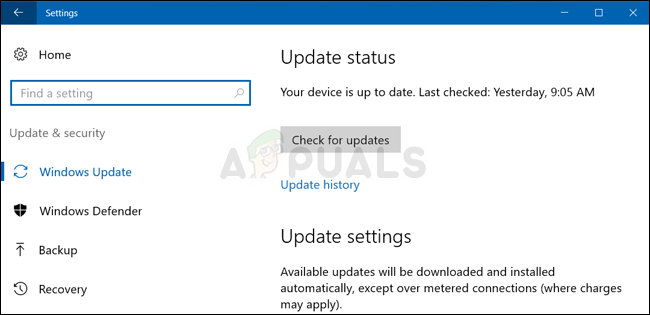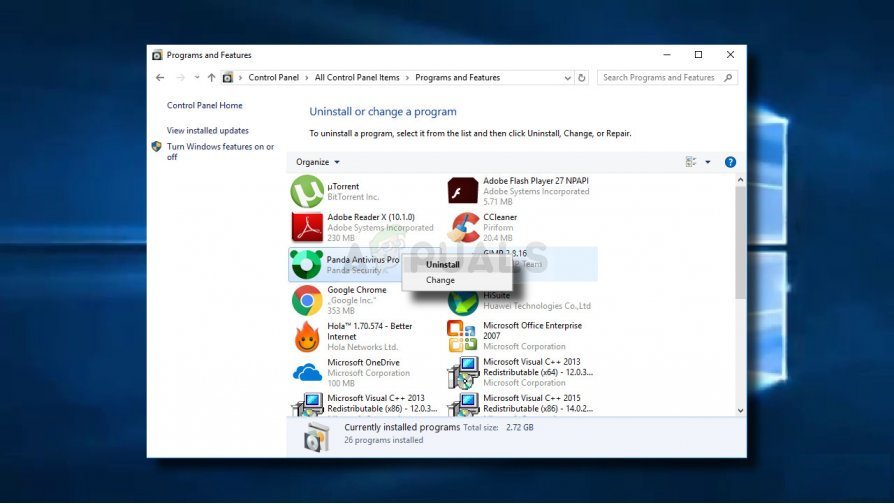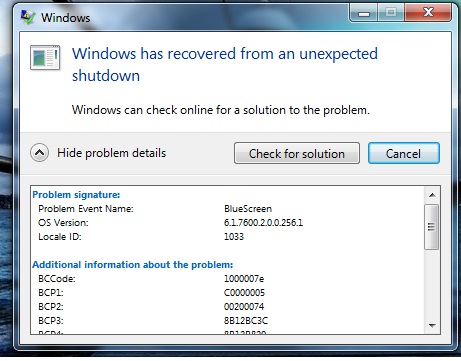Как исправить BSoD с кодом 1000007e на Windows?
1000007e — код синего экрана смерти, которые внезапно может возникнуть на всех современных версиях ОС Windows, начиная от Windows 7 и заканчивая Windows 10. Однако наибольшее количество сообщений об этом BSoD исходит от пользователей «семерки» и «восьмерки». Увидеть код можно непосредственно после BSoD в системном сообщении, которое будет ждать вас по входу в Windows.
Что вызывает BSoD 1000007e?
Как правило, для появления этого синего экрана смерти выделяют четыре причины:
- некорректно перенесенные драйвера со старой версии Windows;
- работа антивирусного программного обеспечения;
- устаревшая версия BIOS материнской платы;
- повреждения системных файлов.
Понятное дело, BSoD 1000007e — это крайне неприятная проблема, появление которой может довольно сильно напугать неподготовленных пользователей. Тем не менее при помощи способов, расписанных ниже, вы сможете избавиться от нее в течение получаса или часа.
Способы решения BSoD 1000007e
Способ №1 Установка всех обновлений
Отсутствие определенных обновлений в Windows может вызвать набор самых разных проблем. В этот же список порой может входить и синий экран смерти, хоть и крайне редко. Мы рекомендуем попробовать вам установить для своей Windows все доступные обновления. Выполняется это следующим образом:
- нажмите правой кнопкой мыши на Пуск;
- кликните на пункт «Параметры»;
- перейдите в раздел «Обновление и безопасность»;
- пройдите во вкладку «Центр обновления Windows»;
- нажмите на кнопку «Проверить наличие обновлений»;
- следуйте инструкциям на экране.
Не бойтесь, если ваш компьютер начнет перезагружаться в процессе обновления системы — это вполне нормальное явление. Как только ваша Windows получит все актуальные обновления, протестируйте свой ПК на наличие BSoD 1000007e. Если он не будет появляться в течение длительного периода времени, то дело определенно заключалось в каком-то отсутствующем обновлении.
Способ №2 Удаление стороннего антивируса
У вас на компьютере установлен сторонний антивирус? Знайте, что именно он может стоять за появление синего экрана смерти с кодом 1000007e. Мы рекомендуем вам поступить следующим образом: удалите стороннее антивирусное ПО, перезагрузите компьютер и проверьте, перестанет ли проявляться BSoD. Удалить антивирус вы сможете следующим образом:
- нажмите Windows+R;
- пропишите в пустой строчке значение «appwiz.cpl» и нажмите Enter;
- оказавшись в «Программы и компоненты», найдите свой антивирус в списке установленных приложений;
- нажмите на него правой кнопкой мыши и выберите «Удалить»;
- следуйте инструкциям на экране и перезагрузите свой компьютер.
Протестируйте свой компьютер на наличие синего экрана смерти с кодом 1000007e. Как только вы удалить сторонний антивирус, системной будет задействован Защитник Windows. Попробуйте установить другой антивирус либо пользуйтесь услугами системной утилиты.
Способ №3 Обновление BIOS
В некоторых случаях синий экран смерти 1000007e может появляться на компьютерах с устаревшим BIOS для материнской платы. Если вы давненько не обновляли BIOS на своем ПК, то определенно попробуйте сделать это для решения проблемы.
К сожалению, процесс обновления BIOS отличается в зависимости от производителя материнской платы. Мы настоятельно советуем вам пройти на официальный ресурс вашего производителя и ознакомиться с инструкцией по обновлению BIOS.
Вот несколько примеров по обновлению BIOS на различных материнках:
- Dell;
- Acer;
- Lenovo;
- Asus.
Способ №4 Вернуть ПК в исходное состояние
Если ничего не вышло и вышеуказанные методы оказались абсолютно бессильны в вашей ситуации, то вы можете попробовать прибегнуть к такой процедуре, как возвращение компьютера к исходному состоянию. Проще говоря, переустановка операционной системы без потери установленных приложений, личных данных и настроек. Осуществить это можно следующим образом:
- нажмите правой кнопкой мыши на Пуск и выберите пункт «Параметры»;
- перейдите в раздел «Обновление и безопасность»;
- кликните на вкладку «Восстановление»;
- нажмите на кнопку «Начать» под разделом «Вернуть компьютер в исходное состояние»;
- на экране «Выбор действия» кликните на опцию «Сохранить мои файлы»;
- и наконец, нажмите на кнопку «Сброс» для начала возврата своего ПК к исходному состоянию.
Процесс возврата к исходному состоянию может занять довольно продолжительное время, плюс, ваш ПК по окончанию процедуры будет перезагружен. Синий экран смерти с кодом 1000007e после сброса определенно будет исправлен.
by Vlad Turiceanu
Passionate about technology, Windows, and everything that has a power button, he spent most of his time developing new skills and learning more about the tech world. Coming… read more
Updated on
- The 0x1000007e BSoD error is caused by a severely outdated Silverlight version, or by system file corruption.
- The first step to fix 0x1000007e on Windows 10 should be to install the pending updates, if any.
- An SFC scan will help you find any possible corrupted files that lead to bug check code 0x1000007e.
- Don’t forget that an all-in-one BSoD fixer can be the answer to many such blue screen errors.
Getting an error message immediately after starting your Windows 10 computer is not an uncommon occurrence.
The 0x1000007e BSoD error is caused by a severely outdated Silverlight version, system file corruption, or interference from a third-party service.
A hardware-related issue may also be the reason why this 0x1000007e error is shown, but you shouldn’t imagine the worst scenario yet.
Because of the multiple factors that cause this error, it’s likely that you may have to attempt more than one potential fix to suitably repair it.
With that said, we may only suggest you try the solutions below in the given order.
How can I fix error 0x1000007e on Windows?
1. Install pending updates
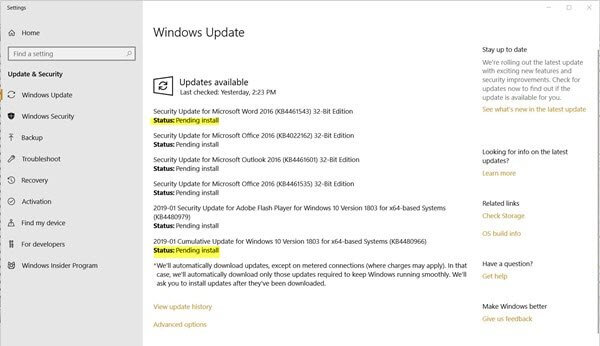
- Press Windows key + R keyboard hotkey to open up a Run dialog box.
- Type wuapp.exe inside the text box and press Enter to open up the Windows Update tab of the Settings app.
- Once you’re inside the Windows Update screen, click on Check for updates.
- After that, follow the next on-screen instructions to install every pending update.
- After each Windows update is installed, restart your computer and you should be good to go.
Windows 10 updates are supposed to be automatically downloaded when available and installed. Make sure you install every pending update that Windows has lined up for you.
Can’t install Windows updates? Just check out this guide to see how easy is to fix that.
2. Use a troubleshooting tool
Since the issue might be deeper than you thought and finding the cause might be difficult, a general troubleshooting BSoD tool can be very useful.
3. Use SFC /Scannow

- Click on Start.
- Then, you need to search for Command Prompt, right-click the top result, and select Run as administrator.
- Type the following command and then press Enter:
sfc /scannow - System File Checker will now verify the integrity of all protected operating system files on your computer.
- It might take quite a while to finish. Once you start this process, you must not interrupt it until the operation is finished.
- Restart your computer if sfc /scannow repaired any files.
System file corruption problems could occur as a result of an issue installing a driver, a system update, or application, or even while making any changes to the installation manually.
Windows 10’s System File Checker (SFC) scannow command can’t fix hardware issues.
But it’s a great place to start if you’re still experiencing the 0x1000007e error and suspect corrupted system files as the culprit.
In the unlikely case that the scannow command stops before the process finishes, we’ve also got an easy fix for you.
4. Use the System Restore utility

- Open up a Run dialog box by pressing Windows key + R.
- Inside the text box, type rstrui and press Enter to open up the System Restore wizard.
- Click Next at the initial prompt.
- Select the Restore point you wish to return to and click Next.
- Follow the instructions to complete the process.
- Lastly, your computer will restart and the new state will be enforced at the next system startup.
Many users reported that the 0x1000007e error was fixed after restoring their PC with the System Restore tool. You may try to do the same.
If System Restore is not working, there is no reason to panic. Just take a look at this useful guide and set things right once again.
Have you attempted to apply one or more of the solutions we have outlined below? Let us know which one worked for you in the comments area below.
Some Windows users have been reaching us with questions after their computer recovered from an unexpected BSOD (Blue Screen of Death) crash. Most affected users are reporting that the issue seems to occur randomly with no apparent trigger. This particular type of crash can be recognized by its unique BCCode (1000007e). The issue is not specific to a certain Windows version since it’s confirmed to occur on both Windows 7 and Windows 8.1.
What is causing the 1000007e BSOD crash?
We investigated this particular error message by analyzing various user reports and the repair strategies that are most commonly being used to fix this particular error message. As it turns out, there are multiple potential culprits that can be responsible for this BCCode (1000007e):
- Incorrectly migrated drivers – This issue is typically reported to occur right after the users’ upgrades to Windows 10 from older Windows versions. If this scenario is applicable, you should be able to resolve by letting Windows migrate all the drivers (you can use Windows Update for this purpose).
- 3rd party antivirus suite – Avast and a few other similar security suites can also be responsible for this type of unexpected BSOD crash. This happens whenever the security suite ends up blocking files that are needed by the Kernel, forcing the OS to restart. In this case, you will be able to resolve the issue by uninstalling the 3rd party security suite that is causing the crash.
- Outdated BIOS version – On certain desktop configurations, the problem is confirmed to occur due to an unstable BIOS version – most frequently reported to occur on Desktop computers. In this case, you should be able to resolve the issue by updating the BIOS version to the latest.
- System File corruption – System file corruption can also be responsible for unexpected BCCode (1000007e) crashes. If this scenario is applicable, you should be able to resolve the issue by performing a repair install.
If you’re currently looking for a fix helping you avoid future BCCode (1000007e) crashes, this article will provide you with several different troubleshooting guides. Down below, you’ll find a collection of methods that other users in a similar have successfully implemented in other to stop the random BSODs.
In order to remain as efficient as possible, we advise you to follow the potential fixes below in the order that they are presented since they are ordered by efficiency and severity. Eventually, you should encounter a viable fix regardless of the culprit that’s producing the error.
Let’s begin!
Method 1: Installing every pending update
As it turns out, this particular issue can occur in instances where a series of migrated drivers are not compatible with the current Windows versions. This typically happens after the users upgraded to Windows 10 from an older Windows version. In this case, the BSOD crash will occur whenever the incompatible driver gets used.
Several affected users encountering the very same error message have reported that they finally managed to resolve the issue after they installed every pending update that Windows Update was preparing to install. This procedure is successful because it’s very likely that the incompatible drivers will get replaced with compatible equivalents.
Here’s a quick guide on installing every pending update via Windows Update:
- Press Windows key + R to open up a Run dialog box. Then, type “ms-settings:windowsupdate” and press Enter to open up the Windows Update tab of the Settings app.
Opening the Windows Update screen - Once you’re inside the Windows Update tab, go over to the right-hand side and click on Check for updates to initiate the scan for updates.
Check for update in Windows 10 - If new updates are available, follow the on-screen prompts to install every pending update until there are none left.
Note: If you are prompted to restart before every update is installed, do so, but make sure to return to the same screen to continue the installation until your computer is up to date. - Once all updates are installed, restart your computer once again and see if the issue is resolved once the next startup sequence is complete.
If this method isn’t applicable to your scenario or your computer is already up to date, move down to the next method below.
Method 2: Uninstalling 3rd party antivirus
An unlikely but rather common culprit is an overprotective antivirus suite. Most often than not, affected users point towards Avast or a similar 3rd party client for triggering the BSOD crashes. The causes behind this behavior are diverse, but it’s possible that the security suite ends up locking some files that are working closely with the kernel, which effectively brings the OS to a halt.
If this scenario is applicable, you should be able to resolve the issue by uninstalling the 3rd party suite that is causing the crash. Here’s a quick guide on how to do this:
- Press Windows key + R to open up a Run dialog box. Then, type “appwiz.cpl” and press Enter to open up the Programs and Features window.
Type appwiz.cpl and Press Enter to Open Installed Programs List - Once you’re inside the Programs and Features windows, scroll down through the list of installed applications until you find the antivirus suite that you suspect might be causing the conflict.
- When you see it, right-click on it and choose Uninstall from the newly appeared context menu.
Uninstalling antivirus tool - Follow the on-screen instructions to complete the uninstallation, then restart your computer to see if the issue has been resolved.
Note: You can follow this article (here) if you want to ensure that any remnant files of the AV suite are also removed.
If this method wasn’t applicable to your situation, move down to the next method below.
Method 3: Updating BIOS version
Some users encountering the issue on desktop computers (mostly on Dell) have reported that they managed to stop the random BSOD crashes with the 1000007e BCCode after they successfully managed to update their BIOS firmware.
But keep in mind that the exact procedure of updating your BIOS version is very different according to your motherboard manufacturer.
Warning: The procedure of updating your BIOS version might end up creating additional stability issues with your PC if you follow the steps incorrectly. Because of this, we only recommend you to update your BIOS firmware if you did it before and you are confident that you will be able to pull it off.
The exact steps of updating will vary from configuration to configuration, so please follow the appropriate documentation according to your manufacturer. Here are some helpful links from the most popular manufacturers that will help you update the BIOS version:
- Dell
- Acer
- Lenovo
- Asus
If your the manufacturer is not in the list above, search online for specific steps.
If your Bios version is updated but you’re still encountering this issue, move down to the next method below.
Method 4: Performing a repair install
If the issue is occurring due to an underlying corruption issue, you should be able to resolve the issue by performing a repair install. Several affected users have confirmed that this method was successful in helping them use their computer normally without the constant 1000007e BOSD crashes.
This procedure is superior to a clean install since it will only refresh Windows components and booting-related processes – Allowing you to keep all personal data including photos, applications, games, videos and any other type of personal files.
If you want to perform a repair install, you can follow the instructions on this article (here).
Kevin Arrows
Kevin Arrows is a highly experienced and knowledgeable technology specialist with over a decade of industry experience. He holds a Microsoft Certified Technology Specialist (MCTS) certification and has a deep passion for staying up-to-date on the latest tech developments. Kevin has written extensively on a wide range of tech-related topics, showcasing his expertise and knowledge in areas such as software development, cybersecurity, and cloud computing. His contributions to the tech field have been widely recognized and respected by his peers, and he is highly regarded for his ability to explain complex technical concepts in a clear and concise manner.
Updated September 2023: Stop these error messages and fix common problems with this tool. Get it now at this link
- Download and install the software.
- It will scan your computer for problems.
- The tool will then fix the issues that were found.
Windows 1000007e error can be caused by several different reasons.
This article from IR Cache contains information that will show you how to fix Windows 1000007e error both (manually) and (automatically). In addition, this article will help you resolve some common Windows 1000007e error messages that you may get.
Table of Contents:
What does Windows 1000007e mean?
Windows 1000007e Error is an error name that contains details about the error, including the cause of the error, the system component or application whose failure caused the error, and other information. The numeric code in the error name contains data that can be deciphered by the manufacturer of the faulty component or application. An error in this code can occur in different places in the system, so even if the name contains some detail, it is still difficult for the user to find and correct the cause of the error without specialized technical knowledge or appropriate software.
This error is usually displayed in this format:
“STOP: 0x0000007E (0xC0000005, 0x804E518E, 0xFC938104, 0xFC937E04).
EXCLUSION_OF_UNMANAGED_STREAMSYSTEMS”.
“0x1000007E: SYSTEM_THREAD_EXCEPTION_NOT_HANDLED_M”
If you get this error on your PC, it means that a system malfunction has occurred.
Common causes include incorrect or failed installation or removal of software that may have left invalid entries in the Windows registry, the effects of a virus or malicious attack, improper system shutdown due to a power outage or other factors, accidental deletion of a necessary system file or registry entry by someone with limited technical knowledge, and a number of other causes. The immediate cause of the “Windows Error 1000007e” error is an error in the correct execution of one of the usual operations by a system or application component.
What is the cause of the 1000007e BSOD crash?
We investigated this particular error message by analyzing the various user reports and the most commonly used fixing strategies to fix this particular error message. It turns out that there are several possible culprits that could be responsible for this BCCode (1000007e):
Incorrectly migrated drivers:
This problem usually occurs right after users upgrade from older versions of Windows to Windows 10. If this scenario applies, you can fix it by allowing Windows to migrate all the drivers (you can use Windows Update to do this).
Third-party Antivirus Suite:
Avast and some other similar security suites can also be responsible for an unexpected BSOD crash. This happens when the security suite blocks files required by the kernel, forcing the operating system to reboot. In this case, you can solve the problem by uninstalling the third-party security package that caused the crash.
Outdated BIOS version:
It is confirmed that in some desktop configurations the problem is caused by an unstable BIOS version – most often reported on desktops. In this case, you can solve the problem by updating to the latest BIOS version.
Damaged system file:
A damaged system file can also cause unexpected BCCode failures (1000007e). If this scenario applies, you may be able to fix the problem by performing a repair installation.
If you are currently looking for a solution that will help you avoid BCCode (1000007e) crashes in the future, you can find several troubleshooting guides in this article. Below you will find a set of methods that other users have successfully implemented in a similar way to do away with the occasional BSOD.
To be most effective, we recommend that you follow the possible solutions listed below in the order in which they are presented, as they are ranked in order of effectiveness and severity. Ultimately, you should be able to find a viable solution, regardless of the cause of the error.
Methods to fix BCCode 1000007e
Updated: September 2023
This tool is highly recommended to help you fix your error. Plus, this tool offers protection against file loss, malware, and hardware failures, and optimizes your device for maximum performance. If you already have a problem with your computer, this software can help you fix it and prevent other problems from recurring:
- Step 1 : Install the PC Repair and Optimizer Tool. (Windows 10, 8, 7, XP, Vista).
- Step 2 : Click Start Scan to determine what problems you are experiencing with your computer.
- Step 3 : Click Repair Allto resolve all problems.
Make sure your computer has enough hard drive space
Lack of hard drive space is the most common cause of error 1000007E. This means that if you want to solve the problems, you need to make sure that you can delete all the files that are causing problems on your system. To do this, it is recommended that you first remove any programs that you don’t need from your system, and then remove any “unwanted” files that may also be on your computer.
Remove all third-party drivers
If you have third-party drivers on your system, you may find that these programs are causing problems on your PC. To solve this problem, it is highly recommended that you remove any bugs or problems with your computer – which you can do by clicking “Start > Control Panel > Add or Remove Programs” and remove any corrupt or potentially defective drivers from your computer. Pay particular attention to any installed printer drivers, graphics drivers, or custom audio drivers.
Remove all unsigned drivers on your computer
Unsigned Windows device drivers are also the main cause of 100007E error on your PC, as they constantly prevent the system from working properly or without problems. To most effectively fix these errors, it is recommended that you remove all unsigned drivers from your computer system, a process that can be done in the following steps:
1.) Click Start, click Run, type sigverif, and then click OK.
2.) Click Advanced, click Search for other files that are not digitally signed, navigate to the C:\WINDOWS\SYSTEM32\DRIVERS folder, and then click OK.
3.) Click Start.
4.) This will remove the unsigned drivers, allowing your computer to run relatively smoothly again.
Clean up the “registry” of your system
The “registry” is also a common cause of 1000007E errors on Windows systems. This part of your system constantly causes a lot of problems because the PC keeps restarting it to work.
Although the registry stores everything from your desktop background to your latest emails, it constantly creates a large number of problems that can really only be solved by using a registry cleaner application to fix any errors that may occur on your system. Below you can download the registry cleaner utility and let it analyze and fix all the errors it contains.
APPROVED: To fix Windows errors, click here.
Frequently Asked Questions
BSoD can be caused by poorly written device drivers or faulty hardware such as faulty memory, power problems, component overheating, or hardware operating outside of its specifications. In the days of Windows 9x, incompatible DLLs or bugs in the operating system kernel could also cause BSoD.
- Press the Windows + X key combination. This will open the «Quick Links» menu.
- Click on «Event Viewer.»
- See Actions.
- Click the Create Custom View link.
- Select the time range.
- Select the «Errors» check box under «Event Level».
- Select the Event Log menu.
- Select the Windows Logs checkbox.
What causes blue screens of death. Blue screens are usually caused by hardware or driver software problems. Sometimes they can also be caused by problems with low-level software running in the Windows kernel. Normal applications usually cannot cause blue screens.
BSODs are usually the result of improperly installed software, hardware, or settings, which means that they can be fixed.
Post Views: 694
Summary: Getting a 0x1000007e error code with a BSOD (Blue Screen of Death) on your Windows system is certainly not a pleasant experience. However, you can fix it with easy-to-apply methods discussed in this blog. You can also take the help of dedicated data recovery software to recover data from a BSOD-affected PC.

Contents
- What is a Windows 10 Bugcheck?
- How do I fix the 0x1000007e bugcheck blue screen error?
- What is the cause of the 0x1000007e bugcheck error?
- Fix your PC in the blink of an eye!
- FAQ
It’s not unusual for your Windows 10/11 computer to start up and immediately display an error message. However, it also doesn’t happen so frequently. Therefore, something must be wrong with your system.
An outdated Microsoft Silverlight version, system file corruption, or interference from a third-party service can cause a 0x1000007e BSOD issue. A hardware problem could also cause the 0x1000007e error, but you shouldn’t assume the worst just yet.
You might need to try two or more potential fixes to adequately resolve this problem, given the variety of factors that can cause it.
So, without further ado, let’s dive into the article and resolve this problem for good.
What is a Windows 10 Bugcheck?
Microsoft Windows shuts down when it detects a circumstance that endangers secure system operation. A bug check is used to describe this situation.
The terms “system crash,” “kernel error,” “stop error,” and “BSOD” are also frequently used to describe it. This issue can be brought by a physical component, its driver, or associated software.
How do I fix the 0x1000007e bugcheck blue screen error?
1. Update Windows
The Windows operating system’s source code includes security flaws, errors, incompatibilities, and out-of-date software components. The most recent patches and updates for Windows correct bugs and vulnerabilities in the operating system and related software and occasionally bring new functionality. This sums up why you should run Windows Update frequently.
Updates for Windows 10 are designed to be downloaded and installed automatically when they become available. Install each pending update that Windows has prepared for you.
- A Run dialog box will appear if you press the Windows key and R on your keyboard.
- To open the Windows Update tab of the Settings app, enter wuapp.exe into the text box and press Enter. (Or Enter Settings and look for the Windows update tab.)

- Click Check for updates once you’re on the Windows Update screen.

- After that, install each pending update following the next set of on-screen instructions.
- Restart your computer after each Windows update has been installed.
It turns out that a seriously out-of-date Silverlight version may be to blame for this specific incident. You now have even another excuse to update Windows.
Fortunately, Microsoft has published a patch for the problem, which installs the most recent stable version to address it. Since the patch is part of one of the Cumulative updates, you must install every pending update to benefit from it.
2. Run SFC scan
Problems with installing a driver, a system update, an application, or even making manual installation adjustments could result in system file corruption.
The System File Checker (SFC) tool in Windows 10 cannot resolve hardware problems. But it’s an excellent place to start if you’re still getting the 0x1000007e issue and think that corrupted system files are to blame. It is also necessary to run DISM after this command, and we will shortly explain why.
- Select Start. After that, you must search for Command Prompt, right-click the first result, and choose Run as administrator.

- After entering the tool, type the following: sfc /scannow

- The System File Checker tool will check all protected operating system files on your computer for integrity.
- It can take a while to complete. You must not stop this process before it is complete once you’ve started it.
- Restart your computer.
3. Utilize DISM
DISM is another tool used to fix corrupted Windows files, including issues related to 0x1000007e errors. It is similar to SFC but with a few differences. You can use these two command-line utilities to detect and repair damaged or missing Windows system files.
Normally, you can only complete this process by running SFC instructions, but if SFC fails, you can try DISM commands to restore the system image. For SFC to function effectively, DISM finds and corrects faulty files in the Windows system image’s component store. That’s why it’s recommended to conduct an SFC scan again after DISM.
- Click Start, enter Command Prompt into the search box, right-click the first result, and choose Run as administrator.
- To run a more thorough DISM scan, type the following command: DISM /Online /Cleanup-Image /ScanHealth and hit Enter.

- If any problematic files are found, they will be repaired automatically.
4. Use the System Restore utility
Many people claimed that after using the System Restore utility to restore their PC, they had resolved the 0x1000007e error. You could attempt to follow suit.
- By hitting the Windows key + R, a Run dialog box will be displayed.
- Enter rstrui into the text field to launch the System Restore wizard.

- Upon seeing the first prompt, click Next.
- Select the Restore point you want to return to, and then click Next.
- To finish the procedure, adhere to the directions.
- The changed state will then be imposed at the subsequent system startup as soon as your computer restarts.
5. Recover your files and seek professional assistance
As a last option, you can restore your files from your hard drive and then have a specialist fix your computer. You can use Stellar Data Recovery to make bootable media and then try to recover your files without even starting your PC when the blue screen prevents you from accessing your information.
- Connect the USB drive to another operational PC. It would help if you had a 1GB USB.
- Launch Stellar Data Recovery Professional after downloading and installing it from the official website.
- In the main window of the Select What to Recover screen, select Waffle Menu.
- Choose Create Recovery Drive.
- Use the menu to select the USB drive you want the bootable media from the Create Recovery Drive dialog box.
- Next is to select Create Recovery Drive and OK.
- A new Activation window appears where you need to enter an activation key. After purchasing the product, enter the Key you received via email into the box and press the Activate button.
- Attach the mentioned USB media to your Windows computer that won’t boot.
- Turn on your computer, then rapidly press the F12 or Bios Key to view any connected bootable USB media.
- Select the bootable data recovery media using the arrow keys; then press Enter to boot the computer.
- You will see the Stellar Data Recovery Professional software interface once the computer has booted from USB media.
- From the Select What to Recover screen, select the files you wish to recover and press Next.

- Click Scan after selecting the desired drive.

- Click Recover to save the files that you have selected from the preview menu.

What is the cause of the 0x1000007e bugcheck error?
- Outdated Microsoft Silverlight version: It turns out that an out-of-date Silverlight version may cause this specific issue.
- Anti-Vitus conflicts: Conflict between a third-party antivirus program and a Kernel process, according to a number of user complaints, is another cause of this issue.
- System file corruption: System file corruption is another condition that could result in the occurrence of this error code. This form of BSOD may occur if specific Windows versions experience corruption, leading to widespread system instability.
- Interference from Third-Party Services: It’s also possible that a startup service or process interferes with an operating system component, which ultimately causes the system to crash when specific conditions are fulfilled.
- Hardware-related problems: Several users have confirmed that this specific error code can also happen due to hardware problems that add to the system’s overall instability.
Fix your PC in the blink of an eye!
There is no need to worry if one of the fixes does not work. Refer to our helpful instructions to get everything back on track. These fixes have been confirmed to work by people experiencing the 0x1000007e BSOD error but are now enjoying a problem-free PC.
If you are concerned about your data, Stellar can restore it and give you access to your valuable information again, but make sure to take backups first. You can use backups to restore lost data in minutes; therefore, having a thorough backup is essential.
FAQ
- Why does BSOD prevent me from accessing my computer?
If something critical fails, Windows will shut down the operation to prevent further harm and corruption and display a BSOD.
When a BSOD occurs, your computer will restart. This means that unless your computer resets, you will be unable to use it after a BSOD. Sometimes PCs are trapped in a loop of BSOD and rebooting.
- Why do I use Stellar Data Recovery Professional software to create bootable media?
Because your PC encounters a BSOD problem as soon as it boots up, you must recover your files without booting up Windows to avoid the BSOD. In this circumstance, the only way to retrieve your files is to create a bootable drive.
- Will Stellar Data Recovery Professional software allow me to preview my files before restoring them?
While scanning the storage media, the software provides a better view of the lost and deleted files, such as documents, audio, video, ZIP and RAR files, and so on. The software categorizes the scanned data beautifully in Tree View, File Type, and Deleted List formats for easy data sorting and verification before storing.
About The Author
Farhad Pashaei
As a technophile, Farhad has spent the last decade getting hands-on experience with a variety of electronic devices, including smartphones, accessories, laptops, wearables, printers, and so on. When he isn’t writing, you can bet he’s devouring information on products making their market foray, demonstrating his unquenchable thirst for technology.

